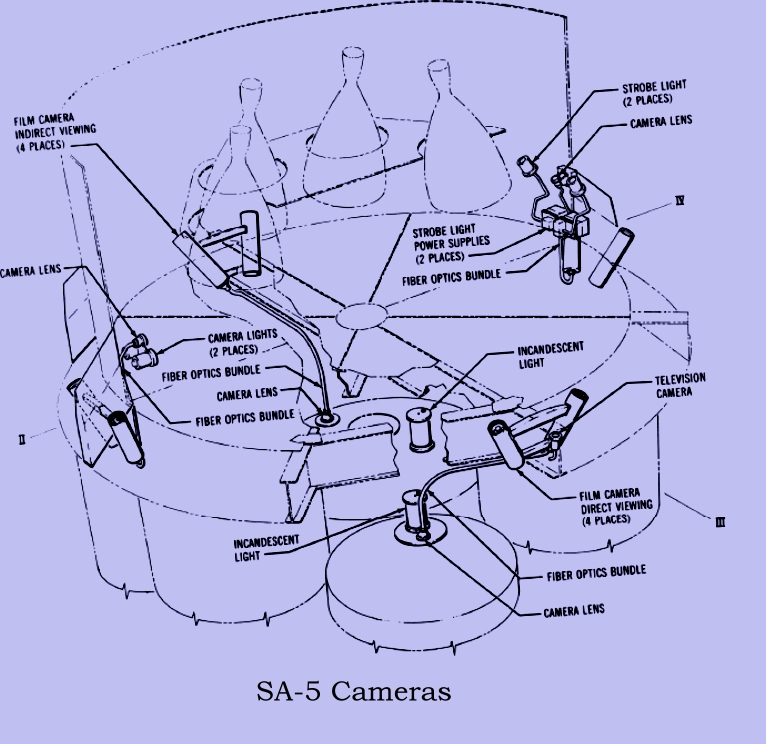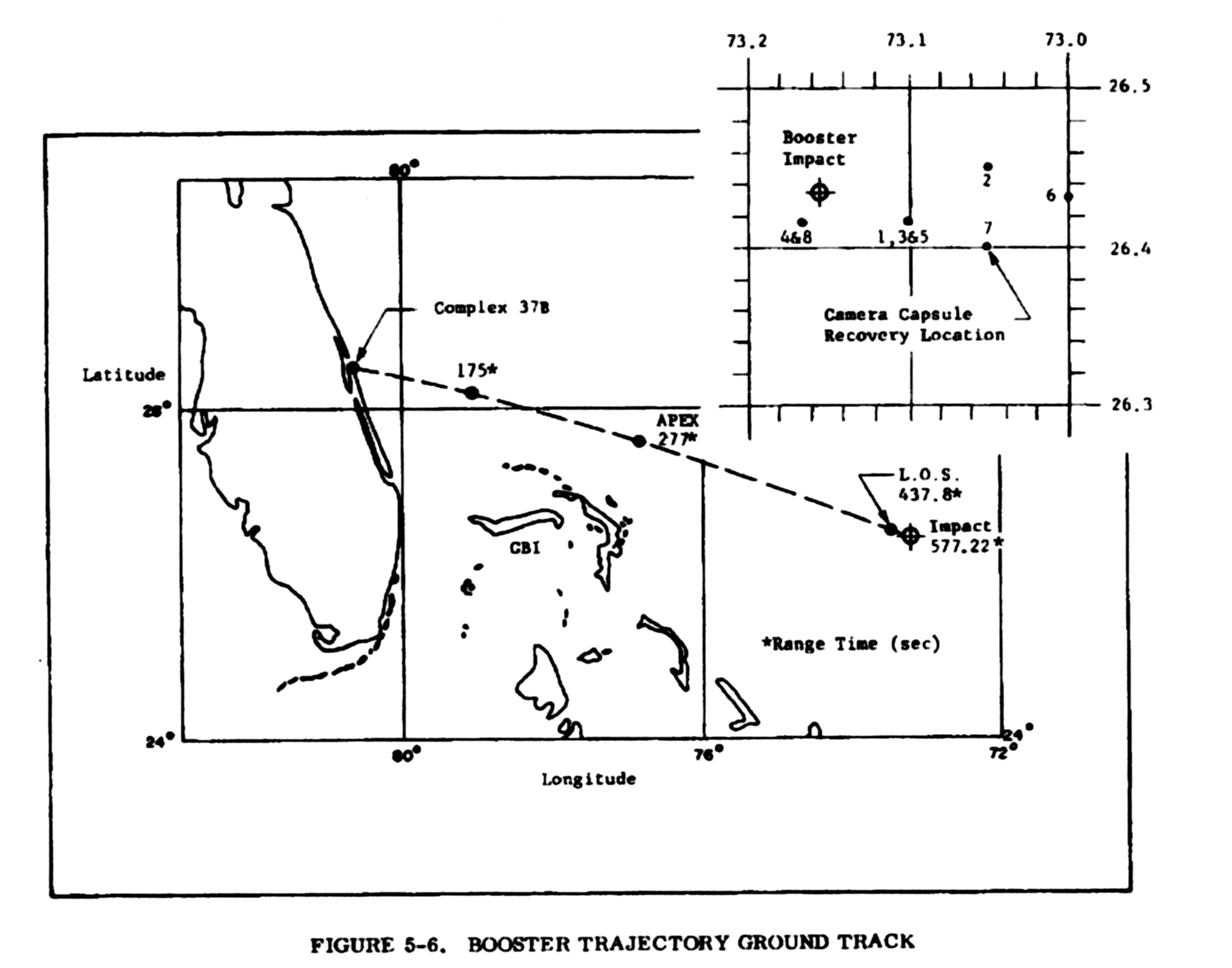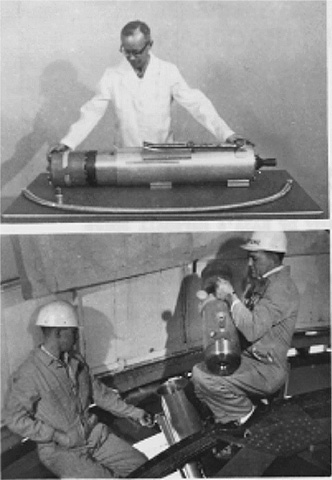
The Apollo Flight Journal
Ejectable camera pods
Wes Oleszewski
© 2019 Wes Oleszewski. All rights reserved.
Did you ever wonder how that really cool onboard movie film of Saturn vehicles staging, or their LOX tanks draining got back to to Earth? Well, here's how it was done...
The movie film (Yes, kids, in the olden days they used actual FILM) was loaded aboard cylindrical metal pods that were sometimes actually the camera body. Notice here that the lens of the camera is seen on the pod that is laying on the table.
The Saturn I Block II vehicles carried eight camera pods. Of course not all of the pods were always recovered. On September 18th, 1964, SA-7 launched and its camera pods were ejected directly into hurricane Gladys. That was because the rocket was launched in order to beat the hurricane's arrival. Seven weeks later, however, two of the camera pods washed up, one on the island of San Salvador and the other on the island of Eleuthera. Their film was undamaged.
At about 20 seconds after staging, a charge was fired that ejected the pods. Saturn I vehicles, for example, ejected their pods at about 301,000 feet of altitude and at a velocity of over 6,000 miles per hour. Of course both the burned out booster and the pods were outside of most of the Earth's atmosphere at that time so they simply continued to climb together in formation. By about 840,000 feet of altitude everything headed back down to earth again, but the whole formation was still traveling over 4,500 mile per hour. They reentered and headed for a splat-down in the Atlantic about 600 miles down range.

Deployment sequence
Once the pods were safely in the lower atmosphere, baro-switches activated the deployment of the para-balloon that would slow the pod in its descent and allow it to float in the ocean.
Normally the pods landed somewhat near the impact point of the booster. After landing a small balloon was deployed which was attached to an antenna that sent out a tracking signal. Navy rescue swimmers had to brave sharks in order to recover the pods.
Each camera was attached to the spider beam on the upper end of the S-I stage.

In this drawing you can see where the cameras were placed.
Although some cameras were integral to their pod, others used remote lenses. They were connected to their associated lens by way of fiber optics. SA-5 was the first Saturn vehicle to use this sort of remote lens film camera, it flew on January 29th, 1964. This was also one of the first practical applications of the fiber optic technology. Prior to NASA using it on the Saturn boosters, it was little more than a laboratory concept.

Seen here are the 1) camera pod, 2) camera pod with para-balloon deployed, 3) remote lens with fiber optic cable (for getting film of engine compartments, or inside fuel tanks) 4) balloon and tracking antenna, 5) fiber optic cable and 6) close up view of the remote lens and its two strobe lights for photographic illumination.
This ejectable camera system was used from SA-5 to Apollo 8. The Apollo 8 first stage, SA-503 was the last Saturn vehicle to carry the cameras. It had two cameras in the upper S-IC stage aimed to catch the S-II second stage as it departed after staging. Unfortunately, neither camera pod was ever found. It is not known if they failed to eject or were simply lost at sea. Following Apollo 8 no more camera pods were carried due to weight restrictions as the LEM was aboard all future flights except for Skylab 1. By that time, however, no camera data was thought to be needed and there was no room in the Skylab budget for installing, recovering or processing film from the cameras on the Saturn V.
Last updated 2019-02-16







